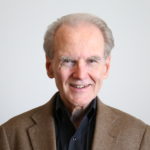Minds of the Movement
An ICNC blog on the people and power of civil resistance
by Jack DuVallJuly 27, 2017
After Donald Trump entered the White House on January 20, calls by progressive activists for organized resistance to his administration’s policies were followed by protests in Washington, other cities, and on university campuses. Although many groups involved in the “Resistance” are nonviolent, their effectiveness can be jeopardized by those who use violent tactics and property destruction.
After the inauguration, bystanders at protests in Washington saw a limousine torched as an artifact of the “corporate state,” and a Bank of America office was vandalized. A spokesperson for a “collection of anti-capitalist, anti-fascist and progressive groups” contextualized such violent acts as “hatred directed toward fascism, toward authoritarianism.”
In February, the President signed an executive order ostensibly to prevent violence against police officers. Some saw that as an effort to criminalize protest, and in at least 18 state legislatures, new laws were proposed to increase penalties on protesters who block highways, to indemnify motorists who collide with protesters, and to sue protesters for the cost of police operations. In Arizona, one law would make protesters susceptible to prosecution under laws intended for organized crime.
Inviting the police to curb dissent, even though it would be unconstitutional in most cases, isn’t new in U.S. history. Stanford University sociologist Doug McAdam says that such charges are “standard operating procedure for movement opponents… the charges are generally bogus…”
Yet violence by firebrands hasn’t been imagined. Less than two weeks after the inauguration, a right-wing media “provocateur” came to speak at the University of California at Berkeley. Users of “black bloc” tactics “set fires, threw Molotov cocktails and smashed windows,” causing $100,000 in damage and disrupting 1,500 peaceful protesters. President Trump called them thugs and “implied that the university should lose federal funding.”
Professor Stephen Zunes, a longtime authority on nonviolent movements, said that the black bloc protesters were “basically hoodlums looking for a mass rally to ride the coattails of.” Erica Chenoweth, a professor at the University of Denver who has done quantitative studies of the use of movements’ tactics, said that violent activists “look to the immediate tactical impacts” but that “they often cost movements a great deal of sympathy and support.”
In June, a radical group emerged in the form of the Fraternal Order of Alt-Knights, who “recruit battalions of mainly young white men for one-off confrontations with…black-clad, left-wing militants…” Another group, the Proud Boys, “purport to be soldiers against a ‘war on Whites’” and initiate new members with violent hazing.
If militants were to spark fighting between ideologically combative groups, that wouldn’t help an otherwise coherent campaign to succeed. As Erica Chenoweth notes, “…‘radical flanks’, when they are adopted or attach themselves to a nonviolent campaign, do not improve the campaigns’ odds of success at all. In fact, such violent wings could hurt nonviolent campaigns because they tend to lower participation.”
None of the street violence so far this year would pass muster with Rev. James Lawson, one of Dr. Martin Luther King, Jr.’s closest advisors in the Civil Rights Movement. He was the key operative in nonviolent protests that ended segregation in the city of Nashville, Tennessee in the 1960s. Today you can still hear Lawson’s revolutionary spirit in his condemnation of “plantation capitalism” and the exploitation of underpaid workers. But for Lawson, opposition to oppression can only prevail by exclusive reliance on nonviolent strategies.
For those in government who suppress protest, Lawson says: “Police killing unarmed people in the streets: Does it decrease crime? Convince people we are a stable society? No. Violence is ineffective. It doesn’t provide a stable village. It creates chaos.”
To those who turn to violence to oppose social injustice, Lawson is equally blunt: “The truth of the matter is that violence can destroy a building, but violence cannot build a university or a family home or a church or a fraternal order, or a farm or a business… It cannot create a city where people can live well in peace and with a sense of worth of their own life.”
Every nonviolent movement is a commitment to living in freedom and justice, once power is shared fairly by everyone. Violent action sabotages that commitment, because turmoil in the streets will be quelled by repression. The success of civil resistance depends on the resilience of a diverse movement that remains nonviolent.

Jack DuVall
Jack DuVall is Senior Counselor and Founding Director of ICNC. From 2002 through 2014, he served as President of ICNC. Prior to that, from 1997 through 2001, he collaborated with Peter Ackerman and Steve York in developing the documentary television series “A Force More Powerful,” of which he was executive producer.
Read More